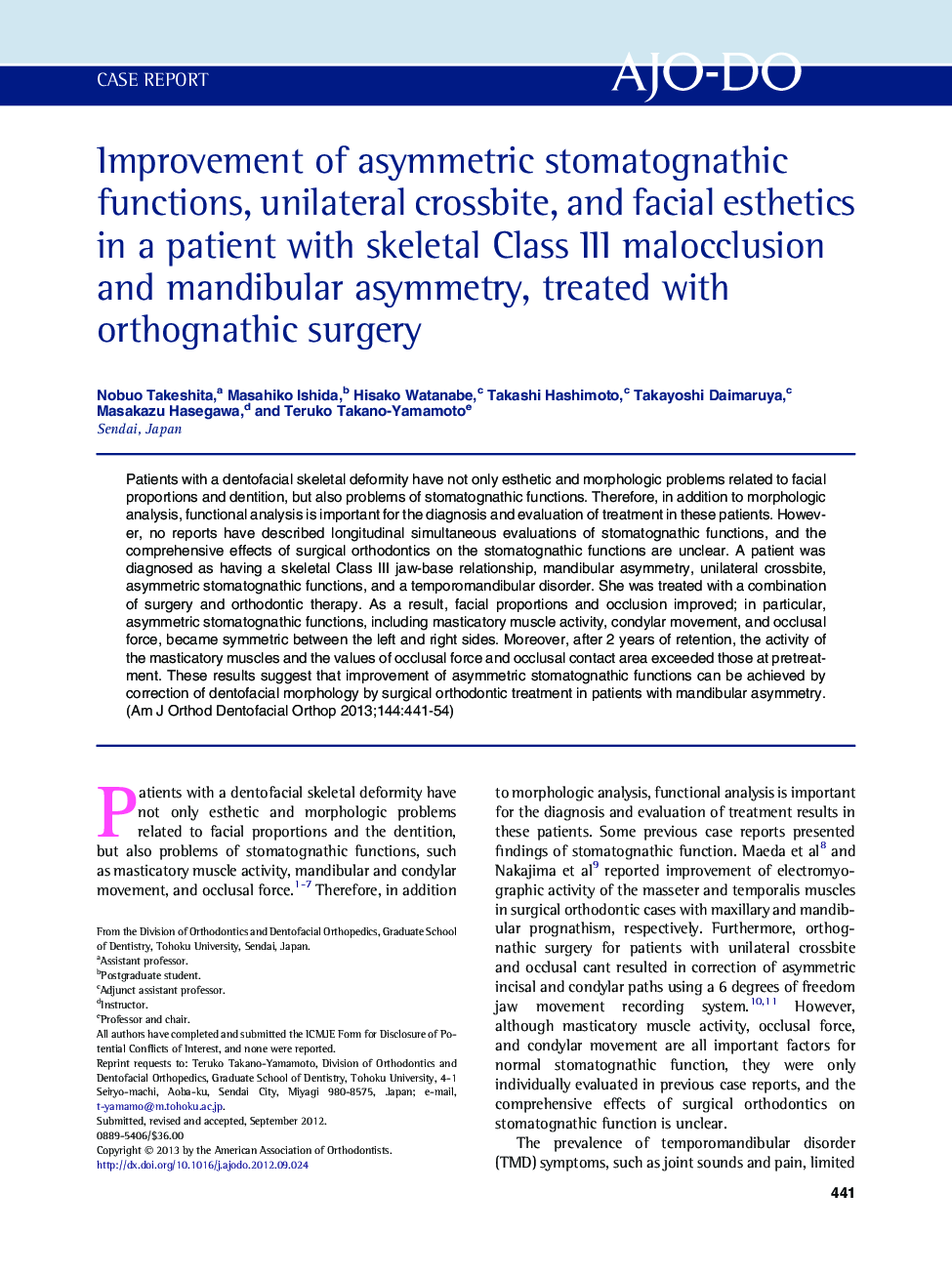| Article ID | Journal | Published Year | Pages | File Type |
|---|---|---|---|---|
| 3117051 | American Journal of Orthodontics and Dentofacial Orthopedics | 2013 | 14 Pages |
Patients with a dentofacial skeletal deformity have not only esthetic and morphologic problems related to facial proportions and dentition, but also problems of stomatognathic functions. Therefore, in addition to morphologic analysis, functional analysis is important for the diagnosis and evaluation of treatment in these patients. However, no reports have described longitudinal simultaneous evaluations of stomatognathic functions, and the comprehensive effects of surgical orthodontics on the stomatognathic functions are unclear. A patient was diagnosed as having a skeletal Class III jaw-base relationship, mandibular asymmetry, unilateral crossbite, asymmetric stomatognathic functions, and a temporomandibular disorder. She was treated with a combination of surgery and orthodontic therapy. As a result, facial proportions and occlusion improved; in particular, asymmetric stomatognathic functions, including masticatory muscle activity, condylar movement, and occlusal force, became symmetric between the left and right sides. Moreover, after 2 years of retention, the activity of the masticatory muscles and the values of occlusal force and occlusal contact area exceeded those at pretreatment. These results suggest that improvement of asymmetric stomatognathic functions can be achieved by correction of dentofacial morphology by surgical orthodontic treatment in patients with mandibular asymmetry.
